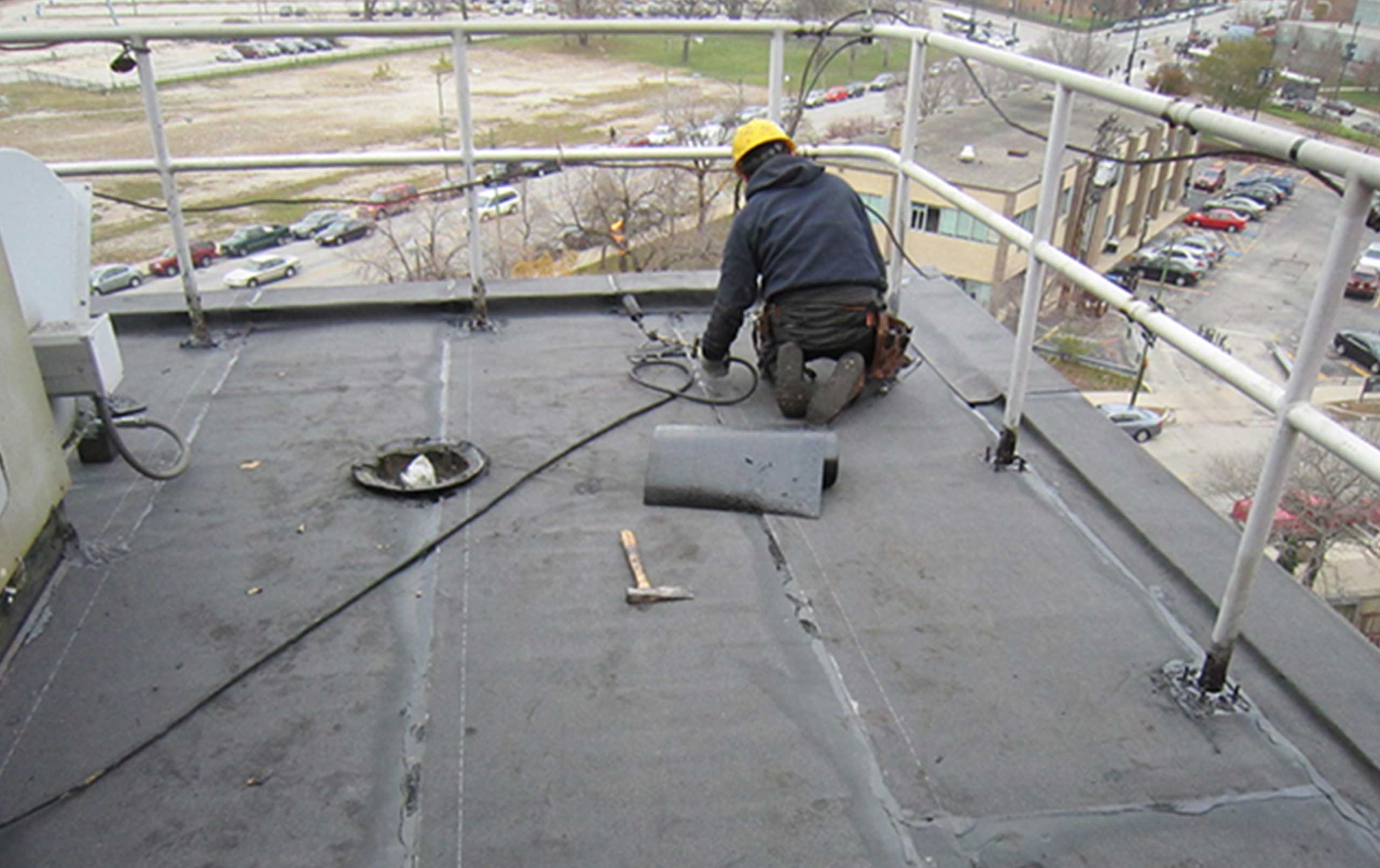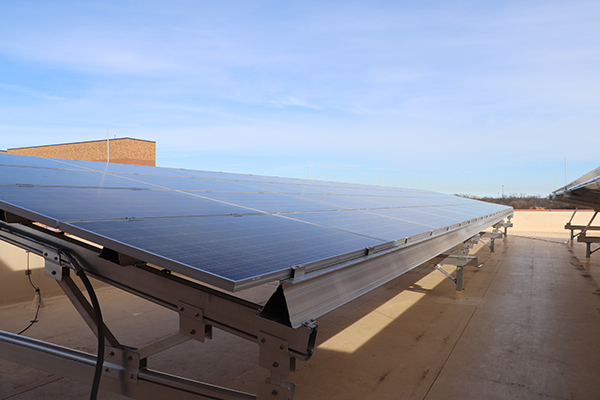
OSHA safety standards require building owners to ensure fall protection for all who go on their roofs.
Fatal falls are a very real problem on construction sites. According to the U.S. Department of Labor, 39% of the 991 construction-related deaths in 2016 were falls.
Reputable contractors are sticklers (and rightly so) for Occupational Safety and Health Administration (OSHA) safety requirements. However, building owners also have a responsibility for ensuring roof safety. OSHA holds building owners accountable for not only their own maintenance personnel, but also for anybody who goes up on their roofs (e.g., contractors).
Last year, OSHA “issued a final rule on Walking-Working Surfaces and Personal Fall Protection Systems to better protect workers.” Most of these updated rules became effective January 17, 2017. Section 1910.28(a) “requires employers to provide protection for each employee exposed to fall and falling object hazards.” And as of May, 2017, owners are required to train exposed workers on fall hazards and related equipment.
Since these more stringent guidelines were enacted, several building owners have asked me to lead campus-wide roofing inspections to check adherence to OSHA requirements. Following are a few things that owners should keep in mind when it comes to roof safety.
Roof Danger Zones
For any surface with an unprotected edge that is 4 feet or more above a lower level, owners need to protect employees with one of the following: guardrail systems, safety net systems, personal fall protection systems, or a 42”-high parapet (i.e., a low, protective wall at the roof’s edge).
OSHA designates three safety zones as follows:
Zone 1: Extremely High Danger Level
Anything within 6 feet from the edge of the roof is designated an extremely high danger zone. It is best to avoid that area altogether, but when movement into the area is necessary, fall protection systems are essential.
Zone 2: Very High Danger Level
Areas between 6 and 15 feet from the roof edge are designated very high danger zones. Being in this area does not exempt workers from using at least one of the fall protection systems listed above.
Zone 3: High Danger Level
Workers are best advised to stay within the area 15 or more feet from the roof’s edge. It is not adequate to simply paint a line on the roof at the 15-foot point—snow can cover it. Instead, building owners should set up a “warning line” with bright, elevated flags to designate Zone 3.
Even if those on the roof are within Zone 3, they should still have the protection systems in place, with one exception: “if work is both infrequent AND temporary, employers do not have to provide any fall protection. Instead, work rules that prohibit employees from going within 15 feet of the roof edge must be implemented and strictly enforced” (OSHA).

Special Considerations
Ideally, all rooftop units and roof drains should sit within Zone 3. Unfortunately, drains and even rooftop units are often near the edge. And since employees need to replace exhaust fan belts and clean roof drains, safety precautions are critical.
Roof hatches and skylights must also have fall protection. Some owners are starting to use fall-resistant glass or wire mesh to prevent skylight falls. However, since these protections are the exception to the norm, it’s better to err on the side of caution and insist on protection systems. For skylights and roof hatches, OSHA requires railings and toe boards on all exposed sides. Workers can access the areas via a swinging gate.
Ladder safety is also important. As of November 19, 2018, a cage will no longer be sufficient for fixed ladders that are 24 feet or more. Building owners will also have to provide a fall arrest system. All new ladders should have these systems, while existing fixed ladders have to be updated to these standards by November 18, 2036.
Keep in mind that I’m giving you a very basic overview of roofing safety requirements. For more detailed information, please see OSHA’s Protecting Roofing Workers manual or the National Roofing Contractors Association’s Roofing Industry Fall Protection from A to Z.
Contact us to learn more about roofing safety assessments, or comment below to share your thoughts on this post.


